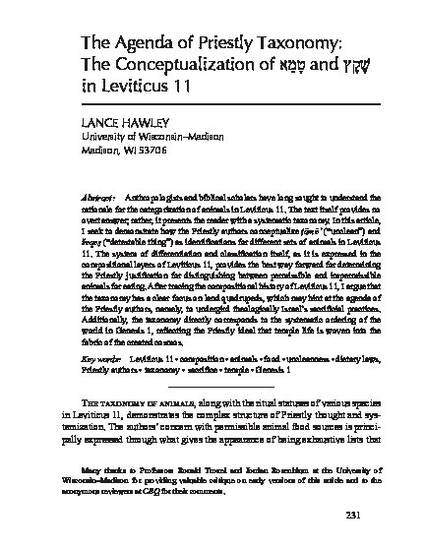
Article
The Agenda of Priestly Taxonomy in Leviticus 11
Catholic Biblical Quarterly
(2015)
Abstract
Anthropologists and biblical scholars have long sought to understand the
rationale for the categorization of animals in Leviticus 11. The text itself provides no
overt answer; rather, it presents the reader with a systematic taxonomy. In this article,
I seek to demonstrate how the Priestly authors conceptualize ṭāmēʾ (“unclean”) and
šeqeṣ (“detestable thing”) as identifications for different sets of animals in Leviticus
11. The system of differentiation and classification itself, as it is expressed in the
compositional layers of Leviticus 11, provides the best way forward for determining
the Priestly justification for distinguishing between permissible and impermissible
animals for eating. After tracing the compositional history of Leviticus 11, I argue that
the taxonomy has a clear focus on land quadrupeds, which may hint at the agenda of
the Priestly authors, namely, to undergird theologically Israel’s sacrificial practices.
Additionally, the taxonomy directly corresponds to the systematic ordering of the
world in Genesis 1, reflecting the Priestly ideal that temple life is woven into the
fabric of the created cosmos.
Disciplines
Publication Date
2015
Citation Information
Lance Hawley, Ph.D.. "The Agenda of Priestly Taxonomy in Leviticus 11" Catholic Biblical Quarterly Vol. 77 (2015) p. 231 - 247 Available at: http://works.bepress.com/lance-hawleyphd/2/
